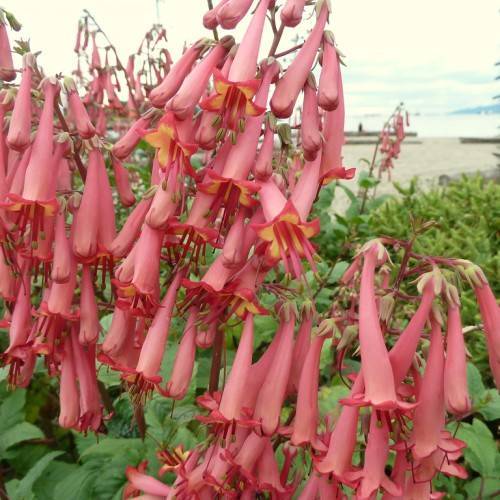
Cape fuchsia
Phygelius aequalis 'Crocorpri' CROFTWAY CORAL PRINCESS
Cycle:
Herbaceous Perennial
Watering:
Average
Hardiness Zone:
7 - 9
Flowers:
Flowers
Sun:
Full sun,part shade
Leaf:
Yes
Growth Rate:
Low
Maintenance:
Moderate
Drought Tolerant:
Yes
Salt Tolerant:
Yes
watering
Cape fuchsia (Phygelius aequalis 'Crocorpri' CROFTWAY CORAL PRINCESS) should be watered regularly, aiming to keep the soil evenly moist. During the growing season (generally midspring through midsummer), water deeply enough to saturate the root system twice a week. Be sure that the plant is not overly saturated as this can cause root rot. During the winter months, watering can be reduced to once every 2 weeks, allowing the soil to dry out slightly between watering. Check for signs of wilting before watering, as this can indicate that the plant is not getting enough water.
sunlight
Cape fuchsia (Phygelius aequalis 'Crocorpri' CROFTWAY CORAL PRINCESS) is a flowering plant that prefers full sun to partial shade. It should receive at least 6 hours of direct sunlight per day. During peak flowering season in late summer to early fall, it is important for it to receive the maximum amount of sunlight, as this is when its blooms can be at their most vibrant. In winter months it can tolerate some shade, but still needs at least 4 hours of direct sun on bright days.
pruning
Cape fuchsia (Phygelius aequalis 'Crocorpri' CROFTWAY CORAL PRINCESS) should be pruned in late winter or early spring, after your area's last frost. Pruning should involve removing any dead or damaged growth. In addition, you should thin out overly dense or scraggly areas for increased air circulation. Regularly pruning your cape fuchsia will help them retain a healthy, strong shape and promote more blooming throughout the season. If heavy pruning is necessary, aim to remove no more than 1/3 of the plant at any 1 time.
